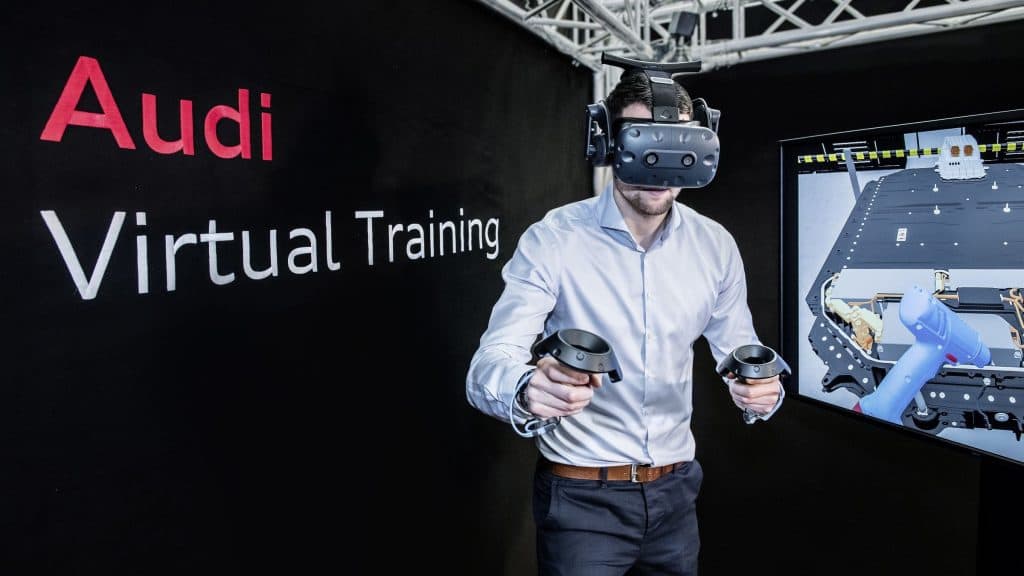 Know-how in high-voltage technology, electrics and electrical engineering: Audi is currently preparing technical trainers and service technicians worldwide for the Audi e-tron. Virtual-reality training is also being used for the first time. The virtual technology allows realistic, safe learning of highly sensitive technologies such as the high-voltage battery. The company uses an efficient digital modular solution that is already in use for VR training in logistics.
Know-how in high-voltage technology, electrics and electrical engineering: Audi is currently preparing technical trainers and service technicians worldwide for the Audi e-tron. Virtual-reality training is also being used for the first time. The virtual technology allows realistic, safe learning of highly sensitive technologies such as the high-voltage battery. The company uses an efficient digital modular solution that is already in use for VR training in logistics.
With the launch of the first all-electric series model from the Four Rings, new challenges are also facing AUDI AG’s sales and service organization.
“We want to provide our service partners with the best possible support during the transformation towards electric mobility, while digitally aligning our training offering,” says Markus Siebrecht, Head of After Sales at AUDI AG. “This is why we have been working intensively on innovative training concepts for the required qualification profiles. The targeted use of virtual reality is an important building block in this process.”
For example, service technicians practice in virtual space especially on the heart of the new e-tron: the high-voltage battery. In so-called process training courses, they learn step by step how to open the battery, change a switch box or change a battery module. The advantages of virtual-reality training are that thanks to digital technology, Audi was able to roll out the training courses efficiently, quickly and at a high level in the markets worldwide. The technicians there are thus optimally prepared for the new model. In addition, the employees can get to know the new, highly sensitive technology in virtual space without any risk, and can determine the training speed themselves. At the same time, playful elements increase the learners’ motivation. In addition to German and English, the tutorials are also available in Spanish and French.
The VR training for service technology is based on a modular solution that utilizes synergies with other parts of the company. Standard interactions such as gripping components are already pre-programmed, and design data such as for the battery can be imported into existing environment templates. This reduces production and development costs and makes the use of virtual reality in series production affordable.
New training concepts are already being worked on today. A multi-user approach is conceivable, for example, in which teachers and students meet together in a virtual space – even if they are physically at completely different locations. Augmented reality, the fusion of the real and virtual worlds, is also in preparation. Audi is currently developing an application for car body experts in car dealerships that allows them to experience the Audi e-tron as a 3D model in real size via a tablet. Animations then show the service technicians the individual repair steps in detail.
All Audi’s training content is available to service partners worldwide in a cloud-based knowledge database and can be accessed flexibly as required.
Hitachi Inverter
Hitachi Automotive Systems, Ltd. announced that its electric vehicle (EV) inverter has been adopted by Audi for its first mass production EV, the e-tron, which went on sale in Europe from March of this year.
With tightened environmental regulations around the world, many countries are driving for greater adoption of electric vehicles. This has led to the demand for more efficient and higher-output electric motors, inverters, and other electric powertrain systems that will contribute to high performance EVs.